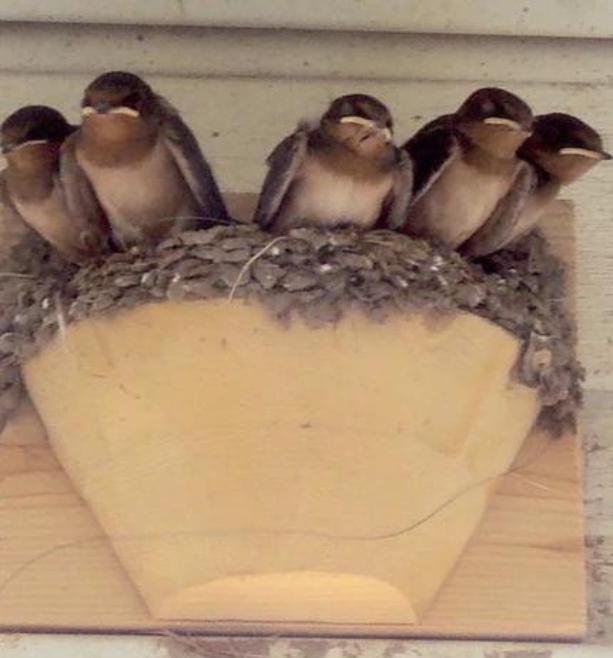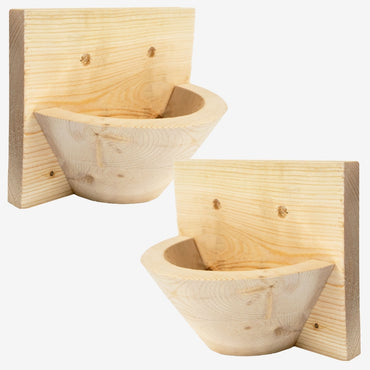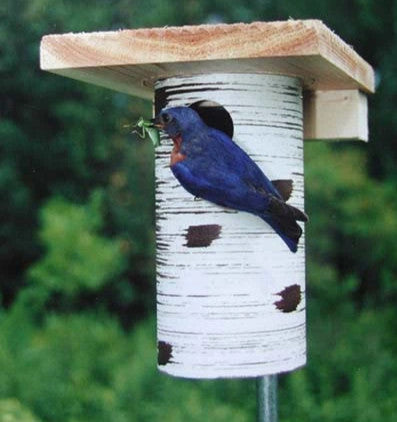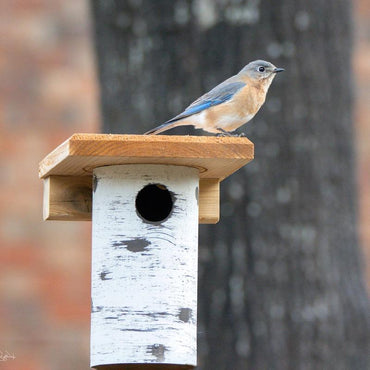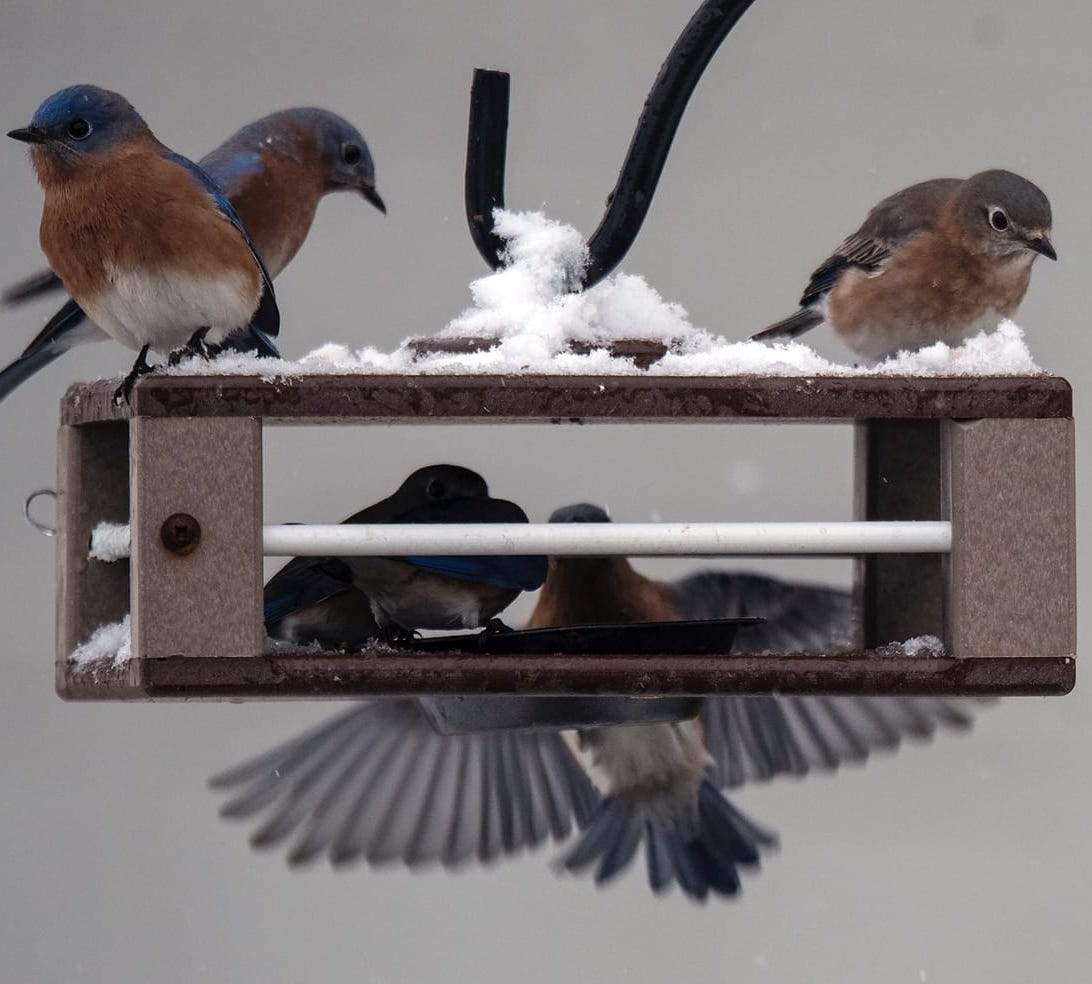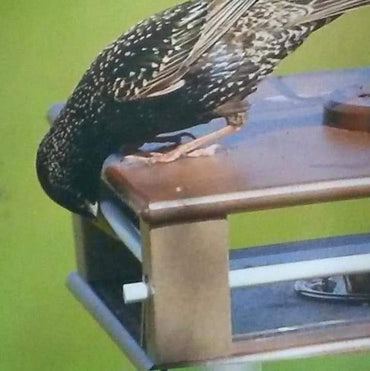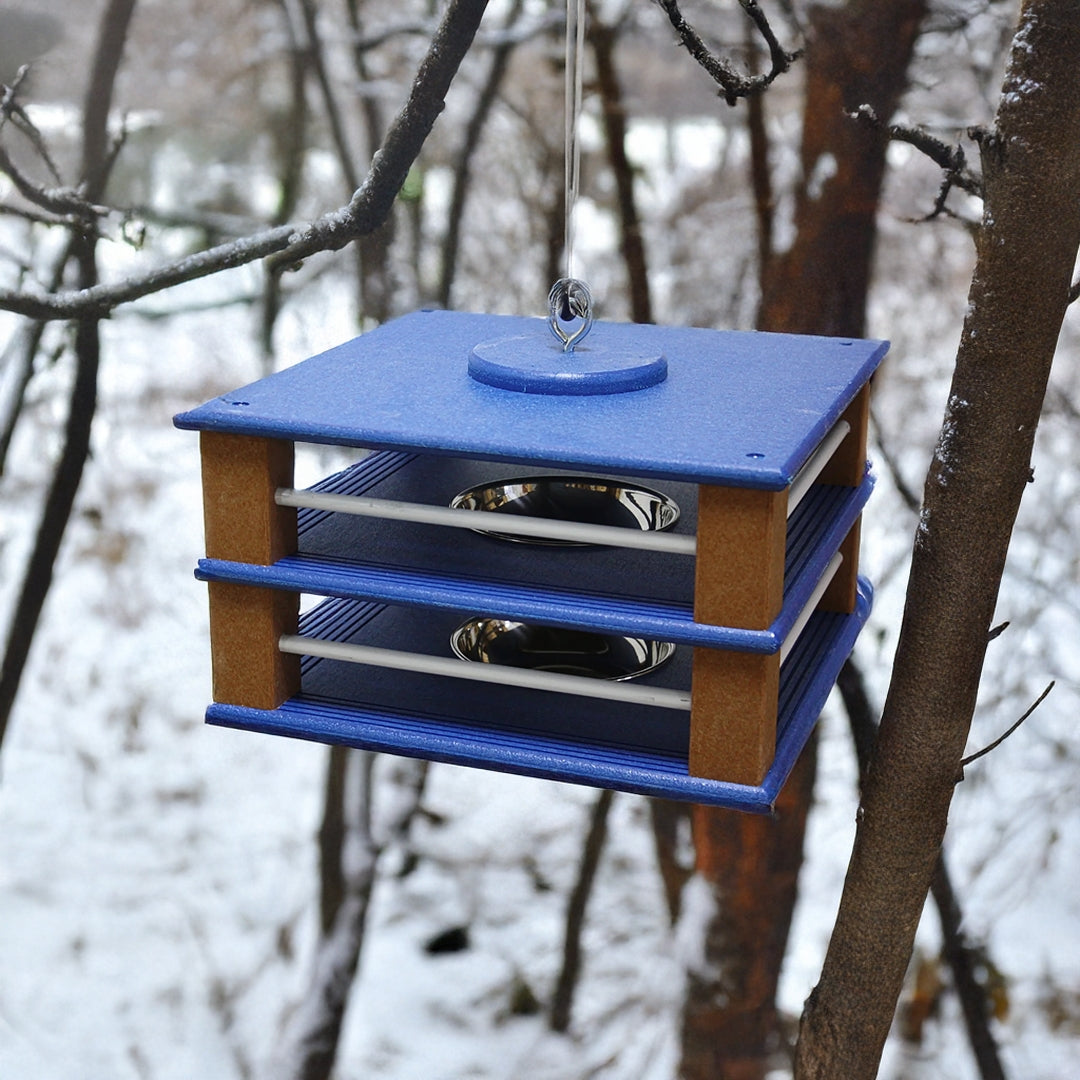As Ruby-Throats make their way north after crossing the gulf, one trick to attract them is having your hummingbird feeders out prior to their arrival. Instinctively, they return to the same spots as last year - better known as site fidelity.
A few new feeders this season are pretty exciting, especially the innovative Humm-Bug. Imagine attracting the sprites without messy nectar! But how?
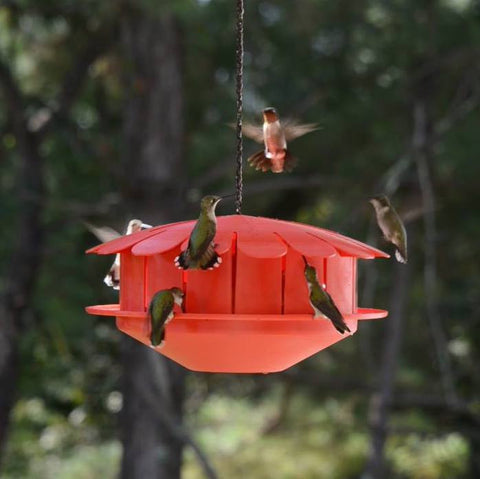 Offer A Substantial Meal For Hummingbirds
Offer A Substantial Meal For Hummingbirds
Because hummingbirds can not survive on nectar alone, protein is an essential part of their diet and fruit flies happen to be one of their favorites.
Feeding babies every 20 minutes or so, the tiny protein-packed treats are constantly carried back to the nest, and mom and dad consume them too.
Simply by placing fruit in the Humm-Bug (bananas in particular) you can offer a substantial meal for hummingbirds. As fruit flies lay thousands of eggs, hummingbirds eat them as fast as they hatch. Check the video of hummingbirds in action on this cool feeder!
Every 3 weeks or so, discard old fruit, rinse the feeder well and begin again. Our plan is to hang this feeder in close proximity to others, and once the sprites are familiar, move it further away from the deck.
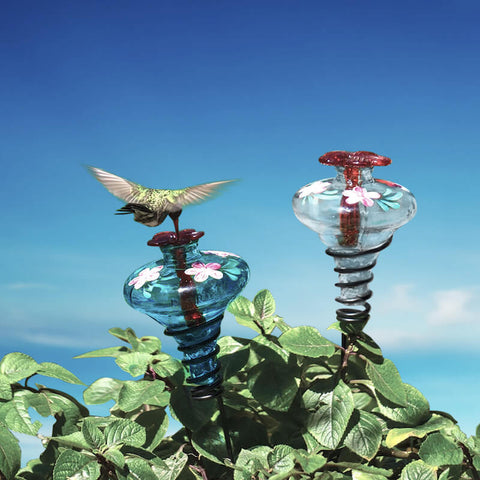 Hand-Painted Blossoms
Hand-Painted Blossoms
For the more traditional nectar feeders, hand-painted glass blossoms, large capacity and ceramic hummingbird feeders are new this spring.
Handmade in Mexico and Santa Fe, both are considered hummingbird capitals, so these artisans know their stuff!
Hand-painted blossoms are crafted in Mexico of recycled blown glass. In clear or aqua, these beauties will hang or stand upright - staked in the garden or in potted plants and flowers on your porch or patio.
Another no-leak design, Blossoms are adored by hummingbirds! Should ants become an issue with staked feeders, a touch of petroleum jelly near the bottom of stake nips this problem in the bud!
Never use the gooey stuff near feeder ports or perching spots.
Ceramic Hummingbird Feeders
Stunning ceramic hummingbird feeders offer continuous blooms and vivid color to entice the sprites all season long. Timeless and trusted top-fill designs offer a no-drip, no-mess solution for sweet nectar, and they're hummingbird-approved! These sweet feeders are glazed inside with removable top for easy filling and cleaning.
Make Your Own Nectar
And speaking of filling, make this season the one to make your own nectar! It's flat-out simple with pure cane sugar and water. Never substitute cane sugar for any other sweetener as it's harmful, possibly even fatal to hummingbirds.
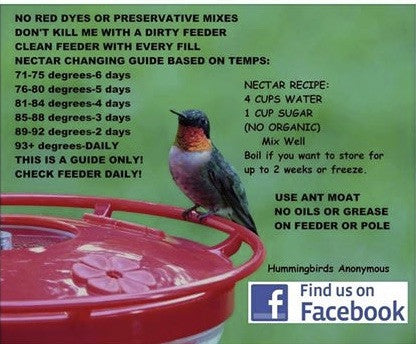 1:4 is the ratio, that's 1 cup of cane sugar to 4 cups of water. Do not boil sugar as it weakens the solution. 1 cup of boiling water will dissolve sugar quickly, then add 3 cups of cold water and forget about cooling time! Store solution in the fridge for up to 3 weeks.
1:4 is the ratio, that's 1 cup of cane sugar to 4 cups of water. Do not boil sugar as it weakens the solution. 1 cup of boiling water will dissolve sugar quickly, then add 3 cups of cold water and forget about cooling time! Store solution in the fridge for up to 3 weeks.
In warmer weather, nectar must be changed every 2-3 days, so it's a real money saver to make your own. The birds won't drink spoiled nectar and may even give up on your feeders and move on. Plus we think the sprites prefer home-made over commercial mixes anyway!
This guide (courtesy of Hummingbirds Anonymous) depicts how long nectar remains fresh and how often it needs to be changed - coinciding with outdoor temperatures. The group offers some great info on their page along with stellar images submitted by members.
Welcome back, little guys... so many folks are anxiously awaiting your arrival!




